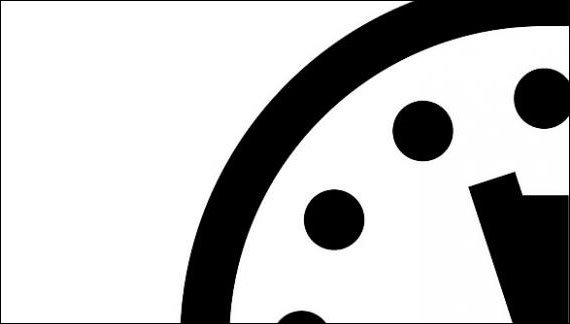
Long-time Corporation grantee, the Bulletin of the Atomic Scientists, made big news yesterday by doing very little. Their famed “Doomsday Clock” which illustrates “how close we are to destroying our civilization with dangerous technologies of our own making” stood firm at three minutes to midnight—despite the past year’s progress in both the Iran and climate change negotiations. Why the pessimism? Members of the Bulletin’s Science and Security Board, who decide where to place the clock’s minute hand, point to the “extraordinary and undeniable threats to the continued existence of humanity,” and the fact that "world leaders have failed to act with the speed or on the scale required to protect citizens from potential catastrophe. These failures of political leadership endanger every person on Earth.”
Created in 1947 by the same scientists who worked on the atom bomb, the Doomsday Clock last year came the closest to midnight it has been since 1984, a particularly low point in U.S. Soviet relations. This year, the clock’s hands remain stuck for many reasons, mainly: a looming climate catastrophe; nuclear modernization’s threat to create a new arms race; and the inability of the world’s institutions to deal with emerging technological threats, from deadly viruses to cyberattacks. Corporation program director, International Peace and Security, Stephen J. Del Rosso says, "To paraphrase what Andrew Carnegie said early in the last century at another challenging time in world history, while there may be some ‘bright rays, piercing the dark cloud,' the decision to keep the Doomsday Clock at three minutes to midnight underscores the urgency, complexity, and magnitude of the threats we face today."
Read more about the Doomsday Clock.
- Press Releases


